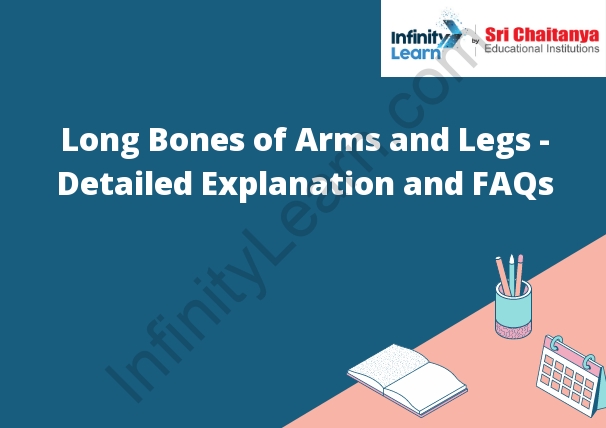Table of Contents
Long Bone in Human Body
Bones are essential for the support of the body and the protection of its organs. Bones come in many shapes and sizes, but all have the same basic components. A long bone is a bone that is longer than it is wide. The femur, or thighbone, is an example of a long bone. Long bones are made up of two types of tissue: cortical bone and trabecular bone. Cortical bone is the dense, outer layer of bone that is responsible for the strength and stiffness of a bone. Trabecular bone is a network of thin, spindly bones that form a honeycomb-like structure and provides support and flexibility to a bone. The ends of a long bone are covered in articular cartilage, a smooth, elastic tissue that allows the bones to move smoothly against each other. The interior of a long bone is filled with bone marrow, a fatty tissue that produces blood cells.

Skeletal System
The skeletal system is the system of bones in the body. The bones provide structure and support for the body, and also protect the organs inside the body. The bones are connected by ligaments, and the muscles are attached to the bones by tendons. The skeletal system also includes the teeth, which are part of the skeleton.
Limb Bones
Bones are the structural foundation of the body. They are formed mainly from calcium and phosphorus and are covered with a thin layer of skin. Bones are classified according to their shape and function.
The bones of the limbs are long and slender. They are attached to the trunk of the body at the joints. The bones of the upper limb are the humerus, radius, and ulna. The bones of the lower limb are the femur, tibia, and fibula.
Hind Limbs
The hind limbs are the back legs of an animal. They are used for locomotion, or movement, and are typically stronger and larger than the front limbs. In many animals, including humans, the hind limbs are also used for balance and stability.
Pectoral Girdle
The pectoral girdle is a set of two bones that form the shoulder joint. The pectoral girdle attaches the upper limb to the axial skeleton. The clavicle and the scapula are the two bones that make up the pectoral girdle.
Pelvic Girdle
The pelvic girdle is the bony structure that supports the weight of the upper body and links the lower limbs to the torso. It consists of two hip bones, which are each made up of three fused bones: the ilium, ischium, and pubis. The pelvic girdle also includes two sacral bones, which are fused together to form the sacrum.
Movement of the External and Internal Body Parts
The external body parts, such as the skin and muscles, are moved by the internal body parts, such as the bones, blood, and nerves. The muscles are attached to the bones by tendons. When the muscles contract, they pull on the tendons, which move the bones. The bones are moved by the muscles and the muscles are moved by the bones. This is how the external and internal body parts are moved.
The human body is a complex system of interacting parts. Each part of the body has a specific function and movement that contributes to the overall health and well-being of the individual. The external body parts, such as the skin, hair, and nails, protect the internal organs and tissues from the environment. The internal body parts, such as the heart, lungs, and liver, work together to process food and oxygen and to remove waste products from the body.
The skin is the largest organ of the body and is responsible for protecting the internal organs from the environment. The skin is made up of three layers: the epidermis, the dermis, and the subcutaneous layer. The epidermis is the outer layer of the skin and is made up of five layers of cells. The keratinocytes are the cells that produce keratin, a protein that strengthens the skin and protects it from the environment. The dermis is the middle layer of the skin and is made up of connective tissue and blood vessels. The subcutaneous layer is the deepest layer of the skin and is made up of fatty tissue and connective tissue. The skin is a dynamic organ that is constantly renewing itself. The cells in the epidermis are constantly being replaced by new cells that are formed in the dermis.
The hair is a filamentous structure that is made up of keratin. The hair grows out of the skin and is used to protect the head and body from the environment. The hair is divided into three parts: the root, the shaft, and the end. The root is the part of the hair that is embedded in the skin. The shaft is the part of the hair that is visible above the skin. The end is the part of the hair that is attached to the root. The hair is a dynamic organ that is constantly renewing itself. The cells in the hair are constantly being replaced by new cells that are formed in the hair follicle.
The nails are thin, plate-like structures that are made up of keratin. The nails grow out of the skin and are used to protect the fingers and toes from the environment. The nails are divided into three parts: the root, the shaft, and the end. The root is the part of the nail that is embedded in the skin. The shaft is the part of the nail that is visible above the skin. The end is the part of the nail that is









